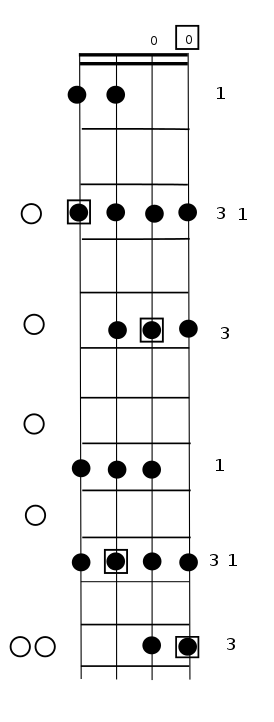Here is a practice track for beginning or intermediate guitarists to sharpen up their minor blues solos. The Key is A minor – so use the A minor Pentatonic. For a more sophisticated approach, you can also make excursions into the D minor Pentatonic over the D minor Chord. For the E7 chord, try an E minor pentatonic, with some half tone bending on the G! That will take the G up to a G# to match the chord tone in the E7 chord (E, G#, B, D)
Another approach is to use the A natural minor scale, switching to the A harmonic minor scale (or just bending the G’s to G#) over the E7. The tempo is slow and the rhythm is steady to give you plenty of scope for exploring.
|Am | | | |
|Dm | |Am | |
|E7 |Dm |Am | |
The chords are a standard blues progression, but in a modern style, there is no final E7 chord in bar 12. Instead you will hear four distinctive organ stabs to alert you that you are coming back to the top again.

